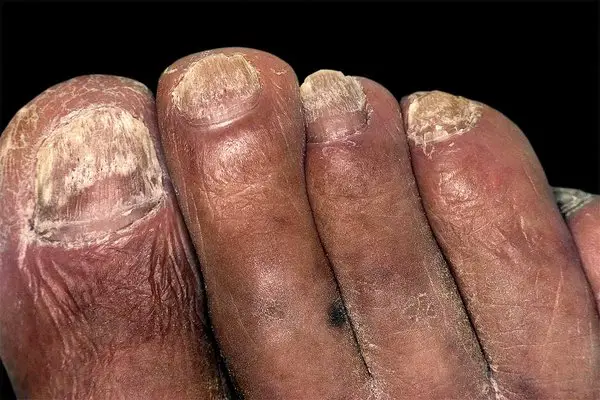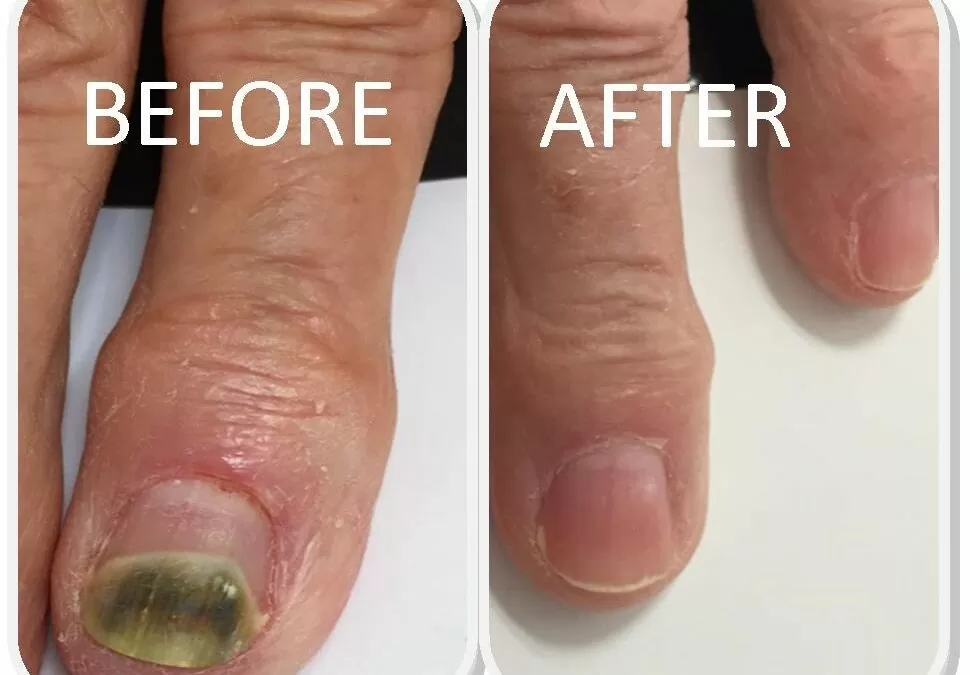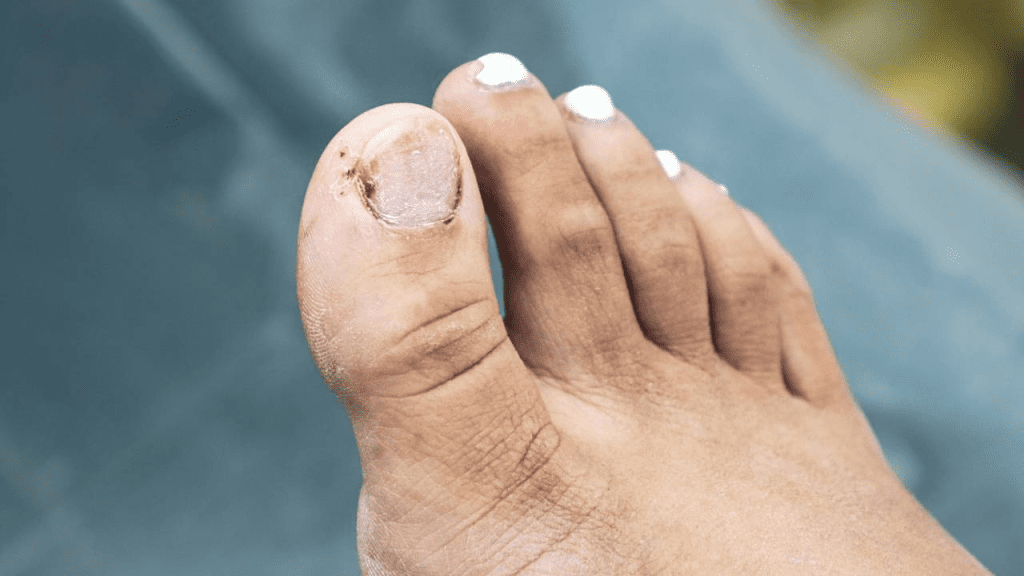Toenail fungus, medically known as onychomycosis, often starts as a seemingly harmless issue—maybe a yellowed nail or some brittleness. Yet, according to Dr. Peter Joseph, a podiatrist at Allegheny Health Network, what begins as a minor cosmetic concern can escalate into a severe health problem if left untreated.
Ignoring toenail fungus isn’t just about tolerating unsightly nails; it’s about understanding the risks it poses to your health, mobility, and quality of life.

What Is Toenail Fungus and How Does It Start?
Toenail fungus is a common infection caused by fungal organisms that thrive in warm, moist environments. It often begins as a white or yellow spot under the nail and can gradually cause discoloration, thickening, and even crumbling of the nail edges.
The condition typically develops due to exposure to damp environments, such as locker rooms or swimming pools, or from wearing sweaty shoes for extended periods. While it’s often dismissed as merely unattractive, its progression can lead to much more troubling consequences.
From Cosmetic Concern to Physical Pain
Initially, toenail fungus might seem like nothing more than an aesthetic problem—embarrassing, but not debilitating. However, as the infection progresses, it can lead to thickened, brittle nails that become difficult to trim. These changes can cause significant discomfort, especially when wearing shoes or walking long distances.
According to Dr. Joseph, untreated toenail fungus can make routine activities painful, from standing at work to simply walking your dog. The thickened nails can press against the surrounding skin, causing inflammation and discomfort.
Additionally, the fungus can spread to the skin, often leading to athlete’s foot. This common companion condition causes itchy, cracked, and red skin, typically between the toes. Together, these issues can greatly diminish a person’s quality of life.
The Risks for People with Compromised Immune Systems
For individuals with weakened immune systems, such as those with diabetes, HIV, or undergoing chemotherapy, the risks of untreated toenail fungus are even greater.

Dr. Joseph highlights that fungal infections can break the skin’s natural barrier, allowing bacteria to enter. This can lead to cellulitis, a potentially severe bacterial infection that causes painful swelling, redness, and fever. If left untreated, cellulitis can spread through the body and result in life-threatening complications.
In extreme cases, toenail fungus can lead to bloodstream infections like sepsis, which requires immediate medical intervention. These risks underline the importance of prompt treatment, especially for vulnerable populations.
Why Early Treatment Matters
One of the key messages from Dr. Joseph is the importance of addressing toenail fungus as soon as symptoms appear. Delaying treatment can allow the infection to worsen, making it more resistant to interventions.
Thankfully, modern treatments offer effective solutions. These include:
- Oral Antifungal Medications: These work from the inside out, helping to eliminate the fungus over several weeks or months.
- Topical Treatments: Creams, ointments, and medicated nail lacquers can directly target the affected area.
- Laser Therapy: A newer option, laser treatments use focused light to kill fungal organisms beneath the nail.
By seeking treatment early, you can prevent complications and restore the health of your nails more effectively.
Preventing Toenail Fungus: Simple Steps to Protect Your Feet
Prevention is always better than cure. Dr. Joseph recommends several practical steps to reduce the risk of toenail fungus:
- Keep Your Feet Dry
Fungi thrive in damp environments, so it’s essential to dry your feet thoroughly after bathing or swimming. - Choose Breathable Footwear
Opt for shoes made of breathable materials like leather or mesh, and avoid wearing tight, non-ventilated footwear for extended periods. - Use Antifungal Products
Apply antifungal powders or sprays to your feet and shoes, particularly if you’re prone to sweating. - Practice Good Hygiene in Public Spaces
Always wear flip-flops or shower shoes in communal areas like gym showers, locker rooms, and swimming pools. - Trim Nails Properly
Keep your nails trimmed straight across and avoid cutting them too short to reduce the risk of fungal infections. - Inspect Your Feet Regularly
Check for any changes in nail color, texture, or shape. Early detection is key to effective treatment.
How Toenail Fungus Impacts Overall Health
While toenail fungus may seem localized, its effects can extend beyond the feet. Persistent pain or discomfort can interfere with daily activities, leading to reduced mobility and a sedentary lifestyle. This, in turn, can contribute to other health issues such as weight gain, muscle weakness, and poor circulation.
For people with chronic conditions like diabetes, toenail fungus can exacerbate existing problems, increasing the risk of foot ulcers and infections. In severe cases, these complications can lead to amputation.

The Emotional Toll of Toenail Fungus
Beyond physical symptoms, toenail fungus can also affect a person’s emotional well-being. Many individuals feel self-conscious about the appearance of their nails, avoiding open-toed shoes, beach outings, or social events.
This embarrassment can lead to decreased self-esteem and social withdrawal. Treating the infection not only improves physical health but also boosts confidence and quality of life.
A Call to Action: Don’t Ignore the Signs
Dr. Peter Joseph’s message is clear: toenail fungus is not something to overlook. Whether it’s mild discoloration or advanced thickening, taking action early can prevent a cascade of complications.
By prioritizing foot hygiene, seeking prompt treatment, and staying vigilant, you can protect yourself from the hidden dangers of toenail fungus.
Conclusion: Healthy Feet, Healthier Life
Toenail fungus might start as a minor nuisance, but it has the potential to become a serious health concern if ignored. From painful symptoms to life-threatening complications, the risks are real—but so are the solutions.
By addressing the issue early, following preventive measures, and consulting a healthcare professional when needed, you can maintain healthy feet and a better quality of life.
Remember, your feet are the foundation of your mobility—don’t let toenail fungus hold you back. Take action today for a healthier tomorrow.





